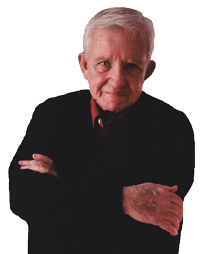I was sent by The Nation magazine to cover the Emmett Till Murder trial in Mississippi in September of 1955. It was the first major “race” story after the Supreme Court Decision banning desegregation in the schools, and reporters from all over the world were there. The trial lasted one week, and it only took the all-white jury an hour and seven minutes to decide the “not guilty” verdict that was a foregone conclusion. Reporters heard later that the reason it took so long was that the jurors had a hard time figuring out how to complete the form that gave their decision to the judge. The last lawyer summed up his case for the defense by announcing his faith that “every last Anglo-Saxon one of you men in this jury has the courage to set these men free.”
The two Anglo-Saxon men charged with murder had come at night to the house of Moses Wright, asking for “the boy from Chicago” who had violated local standards by whistling at a white woman. The body of that boy – fourteen-year-old Emmett Till – was found in the Tallahatchie River with a seventy-pound cotton gin fan tied around his neck with barbed wire. I summed up the aftermath of the trial in the first sentence of my story:
“The crowds are gone and this Delta town is back to its silent, solid life that is based on cotton and the proposition that a whole race of men was created to pick it.”
Every few months I get an email from a student or scholar asking me some question about that trial of sixty years ago. As one student order valium explained, he was asking me because it seemed I was the only reporter who covered the trial who was still alive. A few days ago I got a query from a professor who is writing about the response of the labor movement to the Till case. He had found a report in the files of the United Packinghouse Workers of America that mentioned one of their delegates who had gone to observe the trial had “shared a meal” with me, and wondered if I had any recollections of it. Sorry to say I did not, but mention of the trial evoked another memory of that week in Sumner, Mississippi.
A crowd was gathered on the lawn outside the courthouse during the trial, and the crowd itself was segregated. There was a Princeton student from Mississippi who was defending his state from the negative attention it was getting in the press. He said the image of Mississippi as an exotic place that seemed full of bizarre characters and dark doings, was merely fictional, expressed in the imaginative writing of William Faulkner, who was born and lived most of his life in the nearby town of Oxford. Lowering his voice, as if to explain the reason for what he felt was the novelist’s distorted vision, the student said “Mr. Faulkner, he drinks a good deal.”
This “explanation” seemed as bizarre as everything that happened that week. In some tragic way that trial seems doomed to be repeated in different guises in different parts of the country, decade after decade, year after year, like a national nightmare from which we can never seem finally to wake.
– Dan Wakefield

